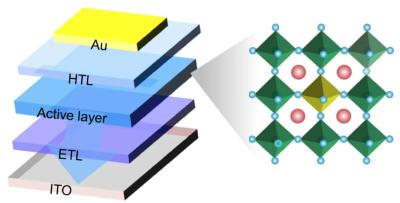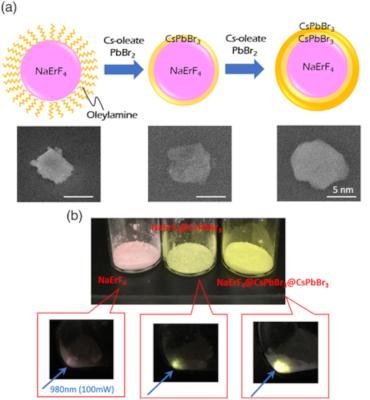Perovskite-Info weekly newsletter
Published: Tue, 12/27/22
The Perovskite-Info newsletter (December 27, 2022)
Cannot read this? View it online here
Researchers develop new strategy to improve efficiency and stability of flexible perovskite solar cells
Researchers from Saule Research Institute, Saule Technologies, Centre for Hybrid and Organic Solar Energy (CHOSE), CNR-SCITEC, Istituto Italiano di Tecnologia (IIT), Wroclaw University of Science and Technology, Bydgoszcz University of Science and Technology and Poznan University of Technology have demonstrated an effective strategy to improve the technical aspects of flexible perovskite solar cells, improving the reliability and efficiency values of these devices.
The team applies large organic ammonium molecules for modifying a buried interface between a hole-transporting layer (HTL) and perovskite-absorbing material. With the 4-fluorophenethylammonium iodide (FPEAI), they achieved 18.66% efficiency for the large-area (1 cm2) flexible solar cell, a significant improvement over the pristine device without modification.
Researchers demonstrate efficient and stable formamidinium–caesium perovskite solar cells and modules from lead acetate-based precursors
Researchers from Monash University, Wuhan University of Technology, CSIRO Manufacturing, The Melbourne Centre for Nanofabrication and Foshan Xianhu Laboratory of the Advanced Energy Science and Technology Guangdong Laboratory have demonstrated "the first effective use of lead acetate as a precursor in making formamidinium-caesium perovskite solar cells". This could lead to a new way of creating durable, efficient perovskite photovoltaics at industrial scale.
Members of Exciton Science, based at Monash University, were able to create perovskite solar cells with 21% efficiency, which they say are the best results ever recorded for a device made from a non-halide lead source.
Researchers achieve single component white LEDs based on lanthanide ions doped lead halide perovskite
Researchers from China's Jilin University have developed a promising method to fabricate white perovskite LEDs using lanthanides (Ln3+) ions doped CsPbCl3 perovskite nanocrystals (PeNCs).
Lead halide perovskite nanocrystals (PeNCs) have attracted extensive attention due to their high photoluminescence quantum yield (PLQY), adjustable bandgap, low cost, and excellent photoelectric properties. In recent years, perovskite based light emitting diodes (LEDs) have developed rapidly and become candidates for low-cost, solution-processing based solid-state lighting. White light perovskite LEDs are possible to be obtained by stacking different NCs with complementary emissions together in one film. However, the halide ion segregation and exchange lead to severe color instability and complex structure in mixed halide perovskite LED devices. Therefore, new technologies are required for the development of white light devices.
Researchers use perovskites to develop near-infrared light detection technology
Researchers from Japan's Teikyo University of Science and Toin University of Yokohama, under the JST Strategic Basic Research Program PRESTO, have developed a new near-infrared light sensor by using perovskite materials that convert weak near-infrared light to visible light.
Near-infrared light is used in a wide range of applications, such as in infrared cameras (night vision cameras), infrared communication (wireless communication), optical fiber communication, remote control, and biometric authentication. The detection of weak light in the near-infrared region and improvement of sensitivity are indispensable for the advancement in optical communication technology, medical diagnosis, environmental monitoring, and other fields. Compound semiconductors (e.g., InGaAs) having an optimal absorption band of 900–1700 nm, are used to detect light in the near-infrared region. However, these systems are expensive because of their complicated manufacturing process that involves the use of rare metals and is limited by noise interference. Moreover, such semiconductors do not exhibit visible light detection accuracy comparable to that achieved using silicon (Si) and other compounds.
Researchers develop a novel approach for stable wide-bandgap perovskite solar cells
Researchers at the National Renewable Energy Laboratory (NREL) and University of Toledo have developed a new approach to manufacturing perovskite solar cells.
Developing highly stable and efficient perovskites based on a rich mixture of bromine and iodine is considered critical for the creation of tandem solar cells. However, issues with the two elements separating under solar cell operational conditions, such as light and heat, limit the device voltage and operational stability. This challenge is often made worse by the ready defect formation associated with the rapid crystallization of bromine-rich perovskite chemistry with antisolvent processes.
Metalgrass LTD
9 Har Tsin St.
Kfar Sava Hasharon 4430809
ISRAEL
Unsubscribe | Change Subscriber Options






